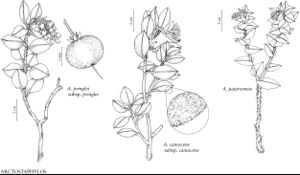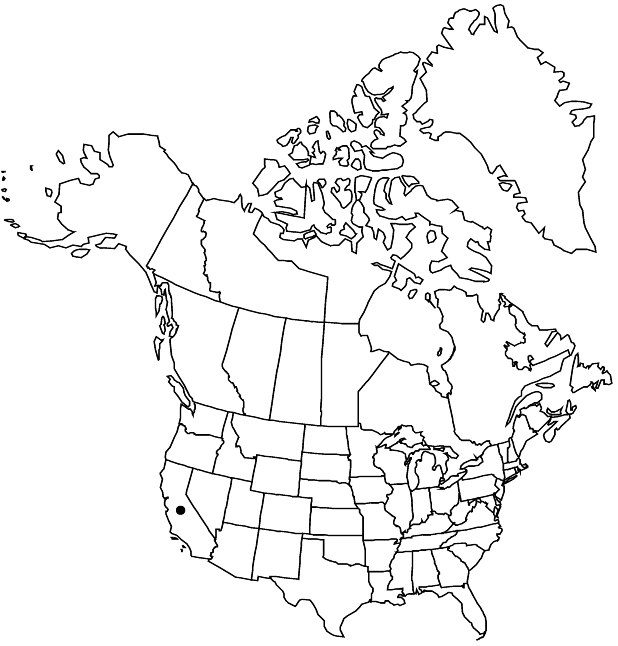Difference between revisions of "Arctostaphylos pajaroensis"
J. Elisha Mitchell Sci. Soc. 56: 41. 1940 ,.
FNA>Volume Importer |
FNA>Volume Importer |
(No difference)
| |
Revision as of 20:30, 24 September 2019
Shrubs, erect or mound-forming, 1–4 m; burl absent; bark on older stems persistent, gray, shredded; twigs short-hairy, sometimes with long hairs. Leaves bifacial in stomatal distribution; petiole to 2 mm; blade light green abaxially, dark blue-green, glaucous adaxially, dull, ovate to triangular-ovate, 2–4 × 1–2 cm, base distinctly lobed, auriculate-clasping, margins (tinged with red), entire, ± cupped, surfaces smooth, glabrous, midvein hairy abaxially. Inflorescences panicles, 2–5-branched; immature inflorescence pendent, branches spreading, axis 1–1.5 cm, 1+ mm diam., short-hairy, sometimes with long hairs; bracts not appressed, leaflike, linear-lanceolate, 5–10 mm, apex acuminate, surfaces glabrous. Pedicels 5–8 mm, finely hairy or glabrous. Flowers: corolla white to pink, urceolate; ovary densely white-hairy. Fruits depressed-globose, 6–8 mm diam., sparsely hairy or glabrous. Stones distinct. 2n = 26.
Phenology: Flowering early winter–early spring.
Habitat: Maritime chaparral on deep to shallow, sandy soils or sandstone outcroppings
Elevation: 0-200 m
Discussion
Of conservation concern.
Arctostaphylos pajaroensis is found in the vicinity of the Pajaro Hills in Monterey County.
Selected References
None.

